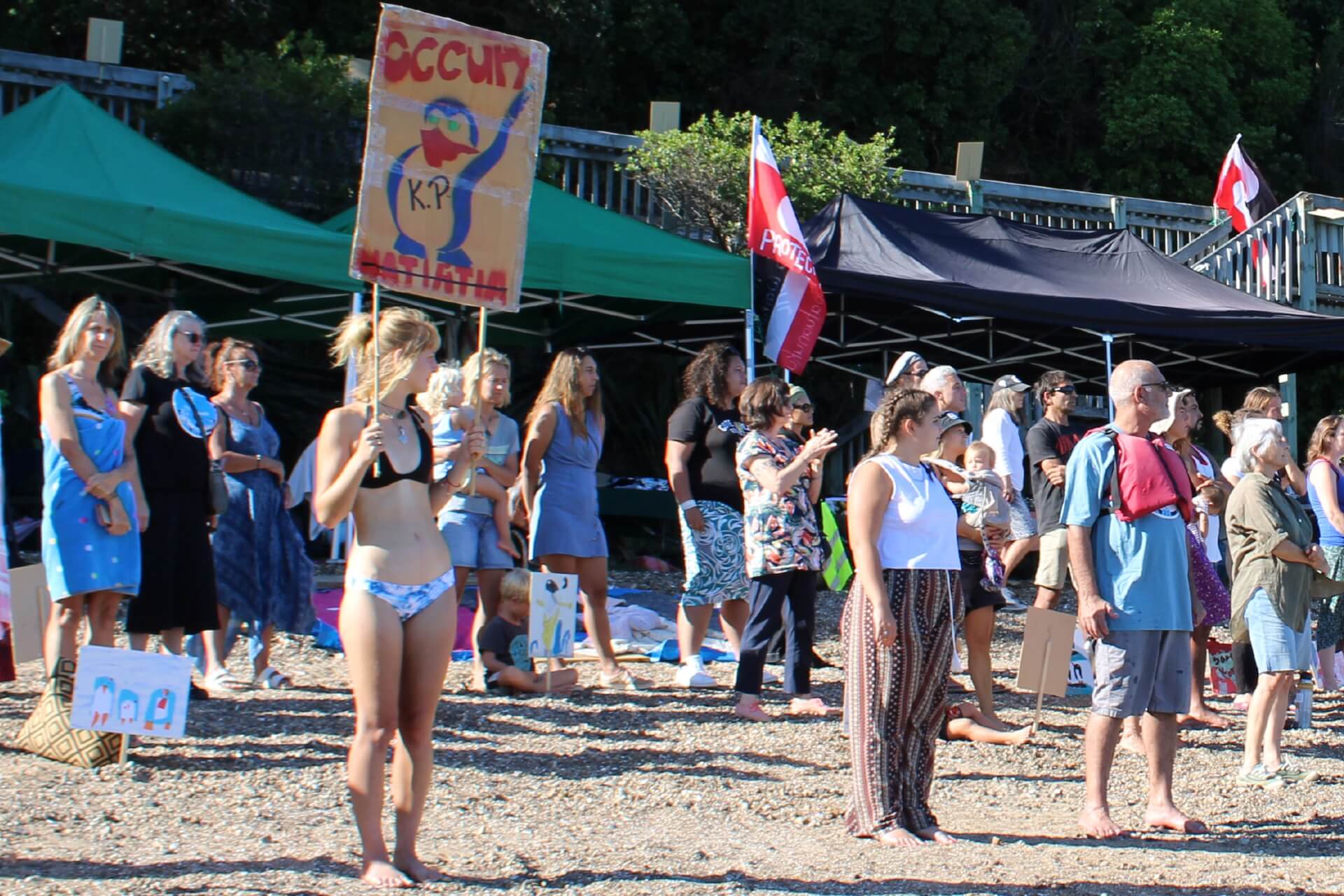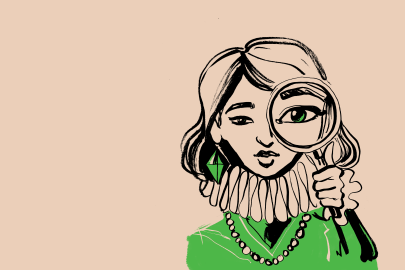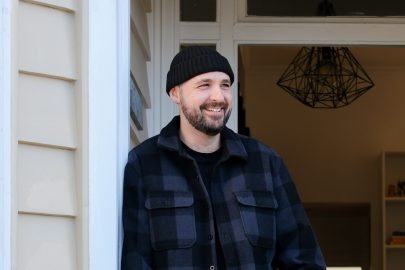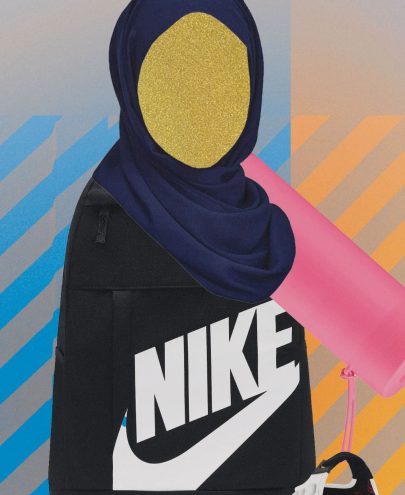Oct 4, 2021 Politics
A slight figure lies spread-eagled in a winter sea, yellow flippers pointing into a blue sky barely smudged with cloud. It is a glorious day, and the sea sparkles as it laps the pōhutukawa-laced beach. It would be just another day on Waiheke if it weren’t for the tall piling barge — a massive, industrial-looking platform — sharing the water with her, and three men in high-vis vests filming her from a dinghy. They take pictures of us, too, the ones on shore.
She is upright now, and watchful. The boat is closing in on her. She retreats warily to the long pontoons floating like the beads of a black necklace on the sea. These mark the edge of her swimming pool — a fully consented construction zone on the water.
The men’s words are carried to the shore — it’s a still day, after all. “Your time will come,” one tells the swimmer, menacingly. Then they retreat. The swimmer relaxes and resumes lying on her back in the forbidden zone — which will soon be under concrete if Kennedy Point Boatharbour Ltd has its way — her brilliant yellow life jacket piercing our gaze, like a kōwhai flower in water.
Waiheke Island has had so many small nips taken out of it that the European bay-namers must have lost count — there are two “Sandy Bays”. Old-timers know every cove, headland and slice of sand and rock: which bays are filled with seagrass and which ones are carpeted with seashells and mud. But everyone knows Kennedy Point Bay, within the larger Pūtiki inlet. It is the gateway to Waiheke not only for holiday-makers travelling by car ferry, but for the island’s freight — every Countdown cabbage, sofa, plank or drug shipment passes down the ferry ramp, past the long breakwater wall curving into the bay, and up a modest two-lane road passing a car park, a vineyard and two schools. Nearly all outgoing freight, including rubbish and recycling, exits the same way. There are few deep-water bays like this one on Waiheke, and none with decent road access. To boaties squeezed by a severe shortage of available marina berths in Auckland, the bay is enticing.
Enter Kennedy Point Marina, a $90 million project which, being built in this coastal area, pays no “occupation fees”, through no fault of its own — Auckland Council has no rules allowing it to collect fees from sites like this. It is being developed by the New Zealand-owned Kennedy Point Boatharbour Ltd and is expected to house around 180 boats (ranging from 10m to 25m) in serviced berths which start at $180,000 for a 35-year lease. It promises secure car parking for up to 72 vehicles on large floating concrete pontoons in the bay; visitors will enjoy a cafe, meeting venue, toilets, showers, laundry facilities, boat maintenance and a grey- and black-water pump-out facility, but, says a Kennedy Point Marina director, Kitt Littlejohn, “no permanent refuelling capacity is proposed on site”. It plans to be New Zealand’s first island marina. The developers have set up a charitable trust to dole out annual grants for island maritime projects.
Since it was first mooted back in 2016, the marina has met fierce resistance from Waiheke residents who worry that antifoulants and other pollutants will be washed into the far reaches of the Pūtiki inlet — an important fishing area and one with deep historical and cultural significance. There are a range of other reasons, too. “You don’t own water,” a friend told me, summing up the views of many. “I pay $2000 rates. Plus, there’s a climate emergency, for fuck’s sake. The car park itself says so much about the people who want to live there. They’re never going to catch the bus, are they?”
A 2019 petition against the marina gathered 11,000 signatures, despite the fact that, in 2018, only 9063 people lived on the island. This year, an online petition opposing the marina amassed 25,000 signatures. More than 1200 came from Waiheke iwi Ngāti Pāoa, a large chunk of the total iwi membership of 3600. Editors at Waiheke newspaper Gulf News tell me that letters opposing the marina outnumber letters in support of it by a comfortable margin.
To Erin Johnson, a journalist who began documenting the marina before starting work for Gulf News in 2019, “it was such a universal story — a community battling something they didn’t want. In Waiheke, people live here because they love the sea, and they care about the environment. Huge numbers of volunteers are involved in reforestation and predator-control projects; they give up their weekends to plant trees. Conservation is in the DNA of this community. There is also a long pedigree of protest.”
But the concerns of those who oppose the development extend well beyond pollution or the privatisation of the commons, to a deep sense of cultural betrayal. Where was the “partnership” guaranteed by the Treaty? The issue resonates with many Māori outside Waiheke who have become aware of the fight over Pūtiki. Some are facing similar issues with their own tribal whenua; the Resource Management Act allows developers to consult smaller iwi groups with no expectation that the wider iwi should be notified. In this case, only a tiny group known as the Ngāti Pāoa Iwi Trust was notified or consulted about the Kennedy Point Marina. This group is now seldom heard from. The Ngāti Pāoa Trust Board and wider iwi were not consulted, and have vigorously opposed the marina for years. As one long-time Waiheke resident told me: “This is about so much more than a marina.”
Pūtiki Bay’s name is derived from a terraced hill at the headwaters of the Pūtiki inlet — the ancient pā site of Te Pūtiki o Kahumatamomoe. Pūtiki means “topknot”; in this case, the topknot of Kahumatamomoe, the son of the captain of the ancestral ocean-going canoe of Te Arawa which glided through this inlet, stopping for repairs before resuming its voyage to Maketū. As often happens with visitors to Waiheke, Kahu was so impressed, he came back and built here. Another great canoe, Tainui, made landfall a short distance away, giving Waiheke a walk-on role in two of the great founding stories of Aotearoa.
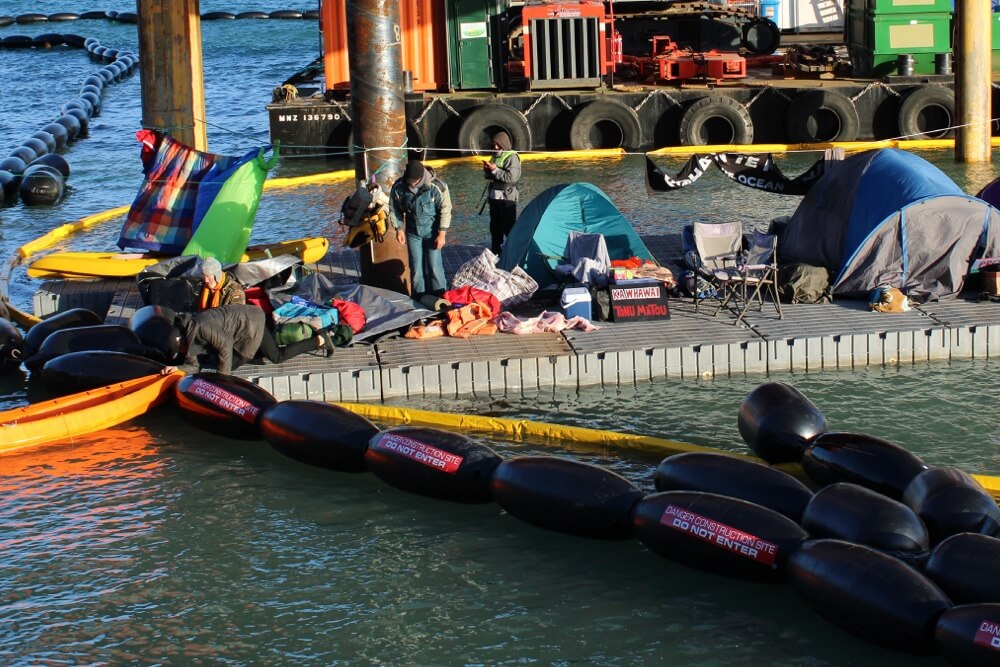
The food in these waters has always sustained Māori including Kathryn Ngapo, who grew up on the kaimoana from this bay. After a lifetime on Waiheke, she left last year. “We moved up north last October, partly because of all the development on the island. But I am still going back all the time. I will follow this [campaign], through.”
Ngapo (Ngāti Porou, Ngāpuhi, Ngāti Awa, Ngāti Pāoa) has long been a central figure in opposing the marina, armed with knowledge, determination and the ability to write angry but coolly forensic letters like the one she addressed to Auckland Mayor Phil Goff in June outlining every argument against the marina in devastating detail. Although this letter may well have curdled the mayor’s blood, like other submissions it was complex and difficult to convey in the media. After serious setbacks in court, the anti-marina movement was losing heart. It needed a spark to inflame local opposition, and a social media genius to amplify the issue more widely. And that is exactly what it got.
The genius arrived on 10 March in the form of blue- haired, 24-year-old social media savant Emily Māia Weiss. The ignition point, a post from the revered Waiheke Native Bird Rescue Facebook page, came a month later. Weiss (Ngāti Pāoa), a University of Auckland master’s student, set up an Instagram account the day she arrived, under the banner Protect Pūtiki. In just four months, the account gained an astounding 14k+ followers, boosted by organisations like Greenpeace and the star power of celebrities like American musician Amanda Palmer, author and psychiatrist Dr Hinemoa Elder, MP Chlöe Swarbrick and, at last count, 50 visual artists and photographers, all donating their work. Some posts have received more than 7000 likes. Lorde has given a generous donation, and TV presenter and former Silver Fern netballer Jenny-May Clarkson has lent her support.
Weiss’s daily video outreach and Protect Pūtiki’s skill with social media make for a new kind of protest, says veteran Waiheke activist, author and founding member of Greenpeace Susi Newborn. “I’m just amazed,” she says. “They all have iPhones. New people are arriving, and going on the front line — beautiful young people with fire in their bellies. At first, there was no structure, but they seem to be self-organising.” Weiss, she says, is a natural. “She’s calm and unassuming, but very articulate. And she understands how important the community is.”
Newborn herself is a frequent sight at Pūtiki Bay sup- porting the protesters, even though she is recovering from open-heart surgery.
Long-time Waiheke resident Bianca Ranson is typical of many of the ‘protectors’ at Pūtiki Bay — a business owner and founding member of the nationwide marine conservation group Mauri o te Moana. She says she knew “from the first few days of meeting Emily that if we had any chance of success, it would be because of her”.
And then there are the kororā — the little blue penguins. In February, Gulf News ran a story headlined, “Consultants Say No Active Penguins at Kennedy Point Marina”. A survey paid for by the developers had, incredibly, found no active kororā burrows in the Pūtiki Bay breakwater. And then two children heard something that sounded like penguins and it turned out that, yes, there were kororā at Pūtiki Bay. And then on 9 April came an incendiary Facebook post from the hallowed figure of Karen Saunders from volunteer-run group Waiheke Native Bird Rescue. Saunders works long hours to save sick and injured native birds, and is the only person on the island with a licence to handle them. She is also a vocal opponent of the marina. Out of the blue, she told her Facebook followers, she was phoned and asked to remove kororā from the rock wall at Pūtiki Bay to enable the developers’ work programme to proceed. She flatly refused. “I was absolutely shocked and couldn’t believe it!”
Neither could Waiheke. Her post was shared 1700 times and has been a PR disaster for the marina. “The Karen Saunders post,” says Ngapo, “was an important indication that the marina developers weren’t as onto it as we had thought they were.” The post, admits marina director Kitt Littlejohn, “did give us a real blow to the kidneys”.
In early July, Johnson reported penguin biologist Professor John Cockrem’s conclusion that more than 100 penguins could be living in Pūtiki Bay. They are difficult to count, he explained. Of one thing he was sure: “It is a regionally significant kororā location.”
This was no surprise to those now living almost full time in the bay, engaged in increasingly fraught run-ins with the developers’ security guards while, as they saw it, simply protecting the creatures they lived among — from the vocal little blue penguins to elegant grey reef herons (the nationally endangered matuku moana).
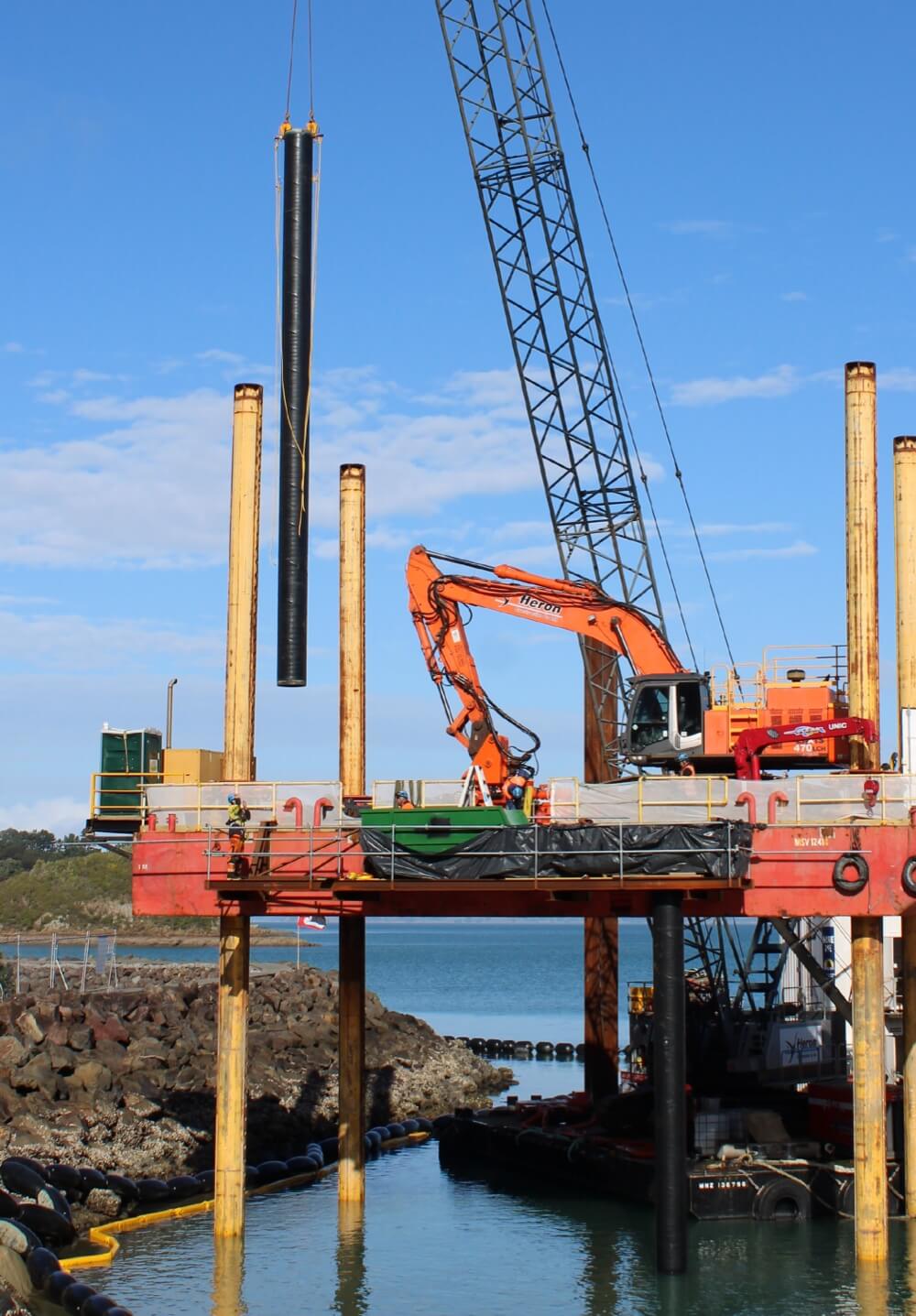
By mid-July, Weiss was facing four counts of wilful trespass (penalty: a fine of up to $1000 or a jail term of up to three months). Ranson had one trespass notice. Charges for protesters keep piling up — Littlejohn tells me more than 60 trespass notices have been issued and statements alleging four assaults given to the police. The schedule for completion of work on the wharf part of the marina is “out the window for this year”, he says, because of the protesters.
If the marina has kept careful track of complaints made to the police about the protesters, it is hard to make out how many have been made by the activists against security. Too many to count, say the protesters. Inspector Gary Davey of the Auckland City police wouldn’t be drawn.
“There have been numerous complaints filed with police from both parties relating to a variety of matters,” he said in July. “Some of these incidents remain under investigation. There are currently 11 people before the court on offences that include trespass, wilful damage and assault. This includes 28 trespass charges and six assault-related charges. We note an incident involving security staff and protesters at the site on 7 July remains under investigation. At this stage, three people have been charged and we cannot rule out further charges being laid.”
The protesters, for their part, say the developers’ charges are being processed at speed while their own complaints — such as boat hooks being used on protesters in the water — are handled at a snail’s pace. Often, they say, they will be told to come into the police station to lay a complaint, only to be slapped with a protest-related trespass notice. This risks the police appearing to discourage the activists from making any statements, even about incidents with witnesses caught on film. Weiss tells me the security guards and construction workers appear to know the protesters’ bail conditions, allowing for breach-of-bail allegations from the developers.
One July morning, to the incredulity of holiday-makers driving into the scene from the car ferry, the bay flooded with uniformed police, apparently intent on arresting four protesters (including Weiss) who were camping on the construction site. Some say there were 70 officers, others 100. I counted 82.
Why send so many police to arrest four people? “Additional resource from different police workgroups were required,” the inspector tells me, “so that we could ensure the safety of all parties involved while those trespassing in the construction area were removed.”
Weiss and the others were taken into town on a small police boat in high seas (a drama of its own — “the police kept yelling, ‘Slow down!’ to the captain,” Weiss says). When they were released at the end of the day, Weiss was ready to share her experiences, and significant upper-arm bruises, with thousands of people online. “So many people are passionate about this. They’ve been out on the water with me. They’ve been arrested with me. They might not be able to come to the island — but we bring them in. But we will never win this without the Waiheke community.”
By early August, police appeared to have replaced Warden Security at the construction site. One day I counted eight officers on guard. No protesters were to be seen in the water, swimming or in kayaks. Some had been trespassed not just from the site, but from the island. Still, both beach and car park sprouted tents and flags. The area was initially dubbed “Camp Hypothermia”; it’s now called Camp Kororā.
Kennedy Point Boatharbour Ltd was still working with the council on its updated penguin monitoring and man- agement plan – by early August, it had submitted three revised plans. Cockrem was scathing about the second plan, lodged on 28 July. This, he wrote to the council, did not apply “current best practice for construction works
in areas where kororā are present, is based on invalid assumptions, does not include adequate monitoring and proposes that construction works continue during the breeding season in a regionally significant kororā colony”.
Weiss is all too aware that protesters need to work with locals who don’t want the marina and are appalled by the clashes at Pūtiki. The activists also know they could be in for a long fight, similar to the one that saved a large block of alienated Māori ancestral land near Auckland Airport from housing developers. Said Tangihaere Gardiner, a young protester camping in the car park: “It’s just like Ihumātao, just a little bit wetter.”
—
This story was published in Metro 432 – Available here in print and pdf.

